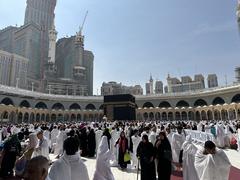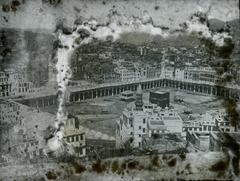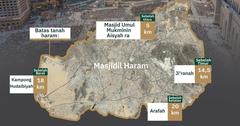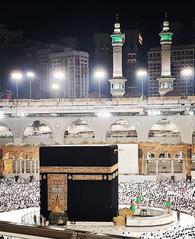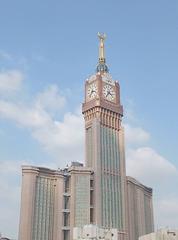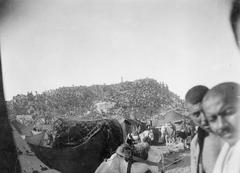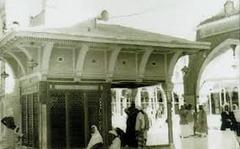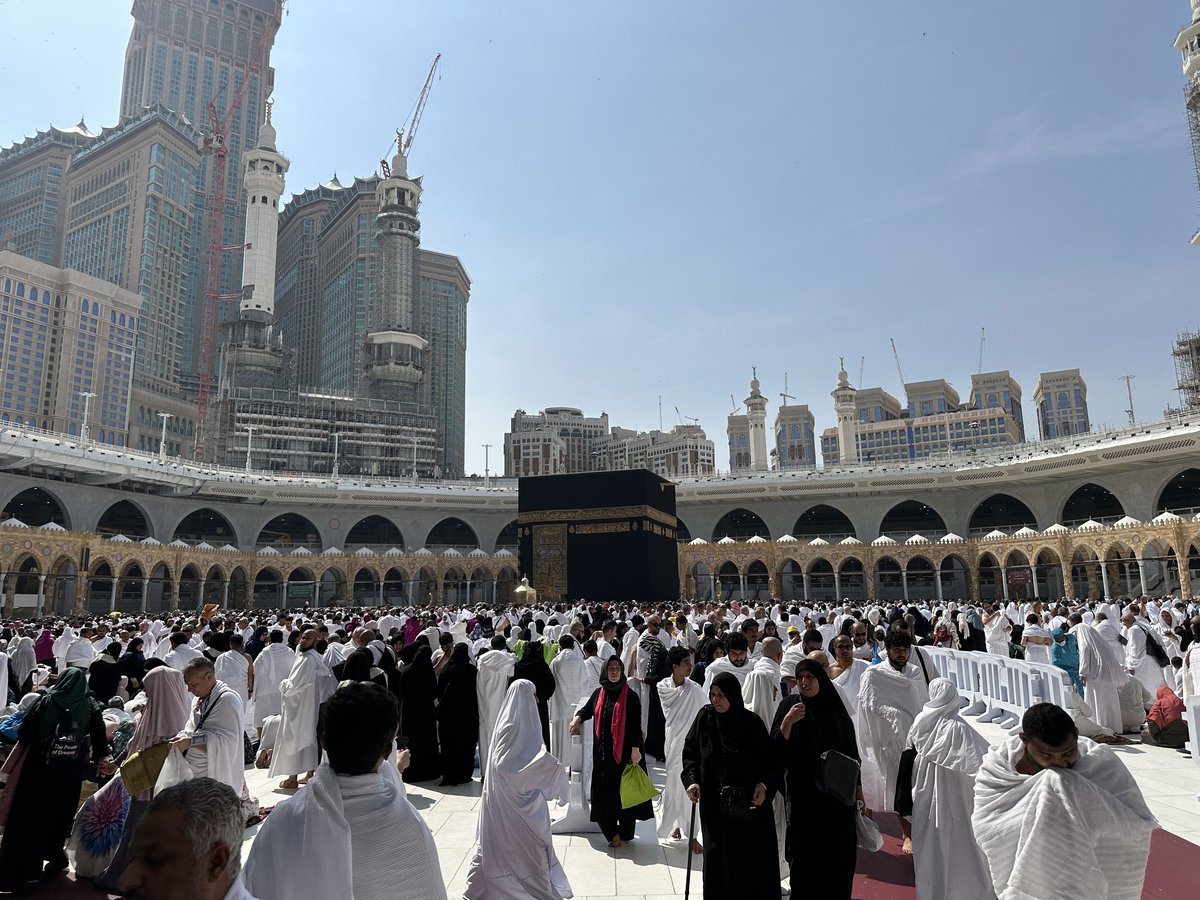
Visiting المسجد الحرام in Mecca: Hours, Tickets, and Travel Tips
Date: 17/07/2024
Introduction
Al-Masjid Al-Haram, also known as the Grand Mosque, holds unparalleled significance in Islam and stands as one of the world’s most important religious sites. Situated in Mecca, Saudi Arabia, this sacred mosque draws millions of Muslims every year, especially during the Hajj pilgrimage. Its history intertwines with the very foundations of the Islamic faith, making it a place of profound spiritual resonance for Muslims worldwide. According to Islamic tradition, the Kaaba, the cube-shaped structure at the heart of the mosque, was first built by the Prophet Adam and later rebuilt by the Prophet Abraham and his son, Ismail, marking it as a place of monotheistic worship (Britannica). Over the centuries, the Grand Mosque has undergone numerous expansions and renovations under the patronage of various Muslim rulers, from the early Islamic caliphates to the modern Saudi Arabian government, which has significantly expanded the mosque to accommodate the ever-growing number of pilgrims.
This comprehensive guide aims to provide an in-depth look into the rich history, religious significance, and essential visitor information for the Grand Mosque. Whether you’re planning a pilgrimage or simply interested in learning more about this iconic site, you’ll find detailed insights and useful tips to enhance your understanding and experience.
Table of Contents
- Introduction
- Pre-Islamic Origins and Early Significance
- The Advent of Islam and the Prophet Muhammad
- Expansion and Development Throughout the Centuries
- The Ottoman Era and Modernization Efforts
- Visitor Information
- FAQ
- Conclusion
Discover the History and Significance of المسجد الحرام (The Grand Mosque) in Mecca
Pre-Islamic Origins and Early Significance
The history of the Grand Mosque predates Islam, stretching back to ancient times. According to Islamic tradition, the Kaaba, the cube-shaped structure at the heart of the mosque, was first built by the Prophet Adam (Britannica). After its destruction in the Great Flood, it was rebuilt by the Prophet Abraham and his son, Ismail, marking it as a place of monotheistic worship.
During the pre-Islamic period, the Kaaba became a sanctuary and a site of pilgrimage for various Arabian tribes who placed their idols within the structure. This period witnessed the rise of the Quraysh tribe as custodians of the Kaaba, controlling access and managing the pilgrimage rituals.
The Advent of Islam and the Prophet Muhammad
The arrival of Prophet Muhammad in Mecca in the 7th century CE marked a turning point in the history of the Grand Mosque. After enduring years of persecution, the Prophet and his followers returned to Mecca in 630 CE and cleansed the Kaaba of idols, rededicating it to the worship of Allah, the one true God. This event, known as the Conquest of Mecca, solidified the mosque’s status as the holiest site in Islam.
Expansion and Development Throughout the Centuries
Over the centuries, the Grand Mosque underwent numerous expansions and renovations under the patronage of various Muslim rulers. The first significant expansion took place during the reign of Caliph Umar ibn al-Khattab in the 7th century, followed by further enlargements under the Umayyad and Abbasid caliphates.
The mosque’s iconic minarets, towering structures used to call the faithful to prayer, were added gradually over time. The first minaret was built by the Umayyad caliph Abd al-Malik ibn Marwan, and subsequent rulers added more, each with its own unique architectural style.
The Ottoman Era and Modernization Efforts
The Ottoman Empire, under Sultan Suleiman the Magnificent in the 16th century, undertook major renovations, including the replacement of the Kaaba’s roof and the addition of new marble slabs to its base. The Ottomans also constructed the present-day structure surrounding the Kaaba, known as the Hateem.
In the 20th and 21st centuries, the Saudi Arabian government has overseen extensive expansion and modernization projects to accommodate the growing number of pilgrims performing Hajj and Umrah. These projects have included the construction of new prayer areas, improved facilities, and advanced infrastructure to ensure the safety and comfort of visitors.
Visitor Information
Visiting Hours
The Grand Mosque is open 24 hours a day, 7 days a week, but visiting hours may vary during special events and religious holidays.
Tickets
There is no entrance fee to visit the Grand Mosque. However, pilgrims must obtain the necessary permits for Hajj and Umrah from authorized agencies.
Dress Code
Visitors are expected to dress modestly. Men should wear loose-fitting clothing that covers the body, while women should wear an abaya and a headscarf. During pilgrimage, men don the ihram, a two-piece white garment, and women wear simple, modest clothing without adornments.
Travel Tips
- Best Time to Visit: The Grand Mosque is busiest during Hajj season (Dhul-Hijjah) and the month of Ramadan. If you prefer a less crowded experience, consider visiting during other times of the year.
- Dress Code: Modest clothing is required. Men should wear ihram during pilgrimage, while women should be covered in loose-fitting attire.
- Weather: Mecca can be extremely hot, especially during the summer. Stay hydrated and wear sunscreen.
Nearby Attractions
- Mount Arafat: Known as the site where the Prophet Muhammad delivered his Farewell Sermon, Mount Arafat is a significant location for Hajj pilgrims, located about 20 kilometers from Mecca.
- Mecca Historical Sites: Explore other historical sites like Mina, Muzdalifah, and the Cave of Hira, where Prophet Muhammad received his first revelation.
Accessibility
The Grand Mosque is equipped with facilities to accommodate visitors with disabilities, including ramps, elevators, and wheelchair services.
Special Events
- Hajj: The annual pilgrimage that attracts millions of Muslims from around the world.
- Ramadan: A significant month for Muslims, with special prayers and activities at the Grand Mosque.
Photographic Spots
Capture the beauty of the Grand Mosque from designated areas. Photography inside the mosque is generally discouraged to maintain the sanctity of the place.
Guided Tours
Consider joining a guided tour to gain a deeper understanding of the historical and religious significance of the Grand Mosque.
FAQ
- What are the best times to visit the Grand Mosque?
- The best times to visit are during off-peak seasons to avoid large crowds.
- Are there any entry fees?
- No, there are no entry fees for the Grand Mosque.
- What should I wear?
- Modest clothing that covers the body. Women should wear an abaya and a headscarf.
Conclusion
Al-Masjid Al-Haram stands as a testament to the enduring power of faith and the unity of the Muslim ummah. From its pre-Islamic origins and pivotal role during the advent of Islam to its continuous expansions and modern-day significance, the Grand Mosque remains a beacon of spiritual and religious devotion. The Kaaba, the Well of Zamzam, and other key features within the mosque complex not only symbolize the oneness of God but also the rich tapestry of Islamic history and culture.
Visiting Al-Masjid Al-Haram is a once-in-a-lifetime experience for many Muslims, offering a profound connection to the roots of their faith. By adhering to the guidelines, respecting local customs, and being well-prepared, visitors can ensure a spiritually fulfilling and memorable journey. For more updates and detailed information, consider exploring official websites and guides that provide comprehensive insights into this sacred mosque (Official Masjid al-Haram Website, Hajj and Umrah Guide).
References
- ‘Discover the History and Significance of المسجد الحرام (The Grand Mosque) in Mecca’, 2023, Britannica (source)
- ‘Essential Visitor Tips and Guidelines for Masjid al-Haram in Mecca’, 2023, Audiala (source)
- ‘Visiting Al-Masjid Al-Haram - Key Features, History, and Visitor Tips’, 2023, Audiala (source)
